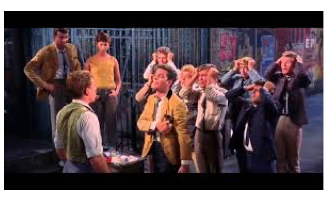It is valuable from time to time to be reminded of how our public workforce system in California and nationwide—the system of job training/counseling/placement—has improved over the past few decades. This past week, while in New York, I was reminded of two failed workforce policies that held sway in 1960s and 1970s, and how they were finally overturned.
The occasion was a meeting in New York of long-time workforce practitioners, drawing on past experiences in looking to emerging workforce challenges. John Colborn, the incoming Chief Operating Office of JEVS Human Services in Philadelphia, led us in thinking about changes we’ve seen in the past half-century. We covered a wide range of topics and policies. Here, though, I want to very briefly set out these two failed policy approaches, as they are ones we need to continue to be on guard against.
One policy that had its origin in the 1950s and 1960s fundamentally viewed the low-income unemployed as ill-adjusted or damaged in a major way. This damage might come through a dysfunctional low income family upbringing or through growing up in a dysfunctional low income neighborhood, or usually both. The result was a culture of poverty and unemployment, that rejected middle class values, and threatened social stability.
This view led to hundreds of millions of dollars in federal funds to support social workers, counseling, and anti-gang mediators, all aimed at curing juvenile delinquency and welfare dependency. Even among the Great Society programs that were ostensibly employment programs, such as the Neighborhood Youth Corps, Job Corps, and Concentrated Employment Program, a good amount of the funding went to program staff and consultants whose job was to counsel youth and adults on their anti-social behavior.
To be sure, even in the 1950s, there were practitioners and social commentators who rejected this view. It would be a young Stephen Sondheim who would express this rejection most bitingly in West Side Story, in the number, “Gee, Office Krupke” (see here). The members of the street gang, the Jets (above) sing about how they are regarded as sick and in need of therapy by the courts and social welfare system. They are psychologically disturbed because of their upbringing and referred to psychologists who declare them to be afflicted with a social disease. They are shuttled between the legal system and social welfare system because deep down there is good.
Today it is difficult to believe that policymakers couldn’t see what Sondheim and others saw in the 1950s. But for the most part the idea that the low income unemployed needed to be cured persisted through the Carter Administration, and was a significant component of CETA. It took not only the Reagan Administration but also the efforts of workforce practitioners and policy commentators to take the system from one heavy with social work to one that emphasized employment or jobs first.
Our present workforce system far more than in the past regards employment as the best social therapy. Employment programs include job coaching and supports for targeted populations. But for the most part there is much greater emphasis than in the past in getting unemployed into jobs, rather than spending a lot of effort analyzing their problems. In this regard, moving from a social work model, the system has improved.
So too the system has improved in rejecting a second prominent idea of the 1960s and early 1970s, the Welfare Rights movement. This movement, with roots at Columbia University and the New York left of the time, encouraged the expansion of welfare benefits and the welfare rolls as response to growing inequality. Professor Richard Cloward, based at Columbia and a leader of the movement, would join with colleague Frances Piven on a 1966 article and subsequent influential book Regulating the Poor. The article and book helped spur social workers and government workers to see their mission as signing up more and more persons for government benefits.
Over the years the workforce consensus has grown to recast welfare and government benefit programs to be job-based. Today the welfare departments in partnership with Workforce Development Boards have a much greater job placement mission than in the past. This is the result of President Clinton’s welfare reform efforts and efforts by other Democrats and Republicans on the local level. It is also the result of a New York-based policy experts, emphasizing employment over welfare, particularly New York University Professor Lawrence Mead, who deserves to be singled out.
Signing up more and more people to go on benefits can never be a measure of effective employment or anti-poverty policy. Similarly, a social worker or therapeutic model that regards the poor as in need of forms of therapy can never succeed. The failed approaches of the earlier decades still bear lessons for us today; just as “Gee Officer Krupke” has not lost its relevancy after 50 years. Go ahead, enjoy another look at the 1961 movie version (click here).

